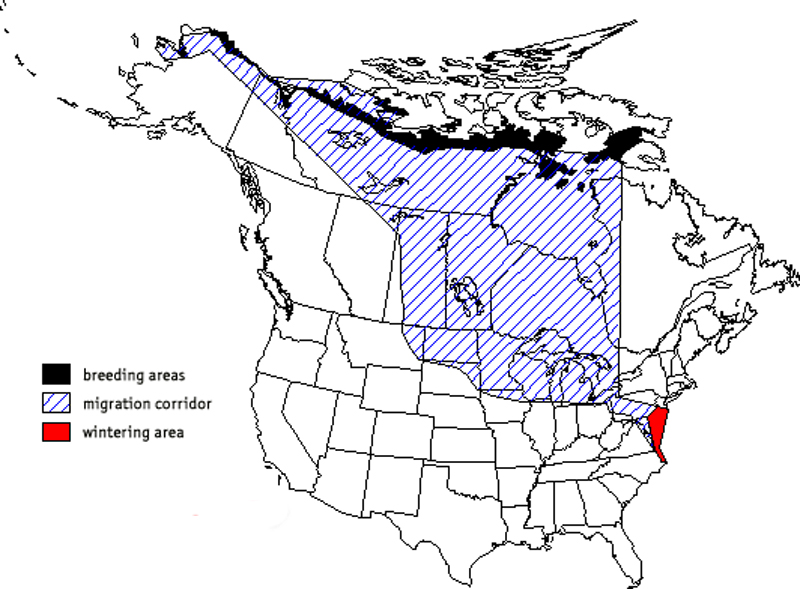Tundra Swan Migration
Their annual northward migration starts from their wintering grounds on Chesapeake Bay on the eastern seaboard, in the State of Delaware and ends at their breeding grounds in the Canadian Arctic a journey of over 6000 km. Along the route they stop at ‘staging’ areas – wetlands and fields where they can feed and rest.
The eastern population of Tundra Swans is most frequently encountered either on their wintering grounds along the Atlantic coast from the Chesapeake Bay to North Carolina, or on the reservoirs and lakes of its staging areas of the North American interior.
The swans migrate north in spring to the Canadian Arctic and return south to Delaware in the fall. They will travel over 12,000 km per year on this round trip journey.

The swan migration spans 3 to 4 months, during the late winter-early spring, with swans remaining on staging areas as long as possible to take advantage of available food. The swans migrate quickly across Ontario, Michigan and Wisconsin and then spend considerable time in North Dakota, Manitoba and Saskatchewan, feeding in agricultural fields, before heading to their breeding areas in the Canadian Arctic.
The arrival and departure dates of the Tundra Swans resting on the Thedford Bog varies greatly. Here is a historical view of when the swans have visited our area.
| Year | First Sighting | Approx. Date of Most Swans | No More Swans | Length of Stay |
|---|---|---|---|---|
| 2006 | 9-Mar | 17-Mar | 30-Mar | 22 days |
| 2007 | 12-Mar | 14-Mar | 2-Apr | 22 days |
| 2008 | 28-Mar | 30-Mar | 11-Apr | 15 day |
| 2009 | 11-Mar | 17-Mar | 2-Apr | 23 days |
| 2010 | 11-Mar | 16-Mar | 31-Mar | 21 days |
| 2011 | 13-Mar | 18-Mar | 8-Apr | 27 days |
| 2012 | 3-Feb | 13-Mar | 20-Mar | 46 days |
| 2013 | 9-Mar | 15-Mar | 8-Apr | 31 days |
| 2014 | 19-Mar | 2-Apr | 11-Apr | 24 days |
| 2015 | 17-Mar | 1-Apr | 10-Apr | 25 days |
| 2016 | 8-Mar | 9-Mar | 26-Mar | 17 days |
| 2017 | 21-Feb | 23-Feb | 8-Mar | 16 days |
| 2018 | 27-Feb | 14-Mar | 25-Mar | 17 days |
| 2019 | 13-Mar | 21-Mar | 3-Apr | 21 days |
| 2020 | 4-Mar | 8-Mar | 16-Mar | 12 days |
| 2021 | 1-Mar | 12-Mar | 24-Mar | 23 days |
| 2022 | 7-Mar | 15-Mar | 22-Mar |
15 days |
| 2023 | 2-Mar | 11-Mar | 5-Apr |
35 days |
| *2024 | 7-Feb | 7-Mar | 10-Mar |
40 days |


 Subscribe to this page
Subscribe to this page